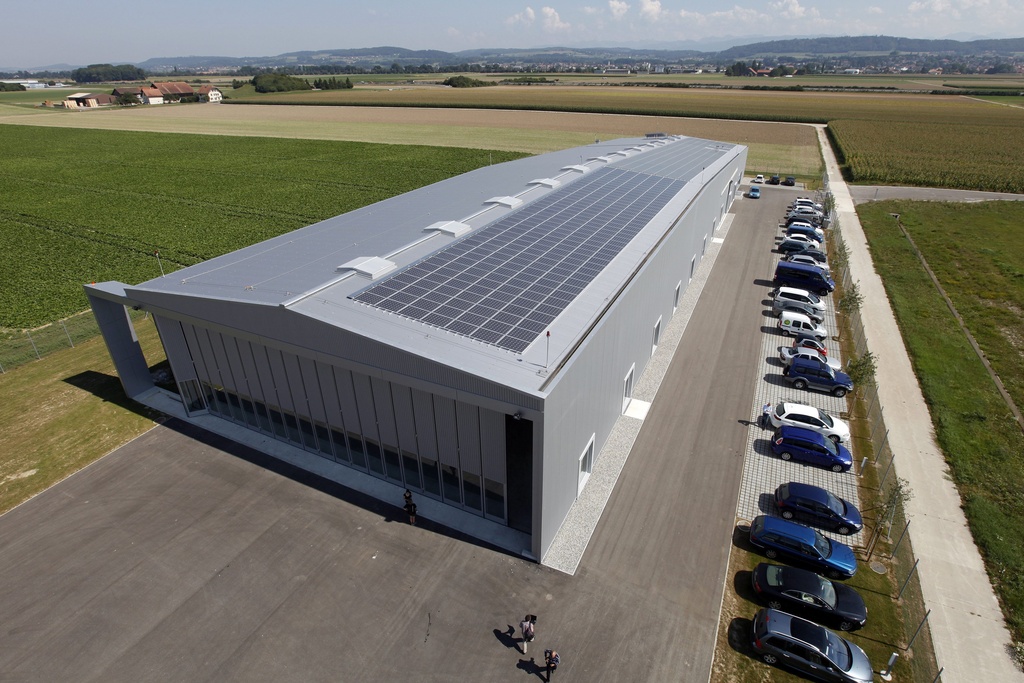
Solar power: the sky’s the limit

This week’s record-breaking night flight by the Solar Impulse aircraft has been widely acclaimed, but few of us are ever likely to fly in such a plane.
Swiss adventurer Bertrand Piccard, the initiator of the project, pilot André Borschberg, and the host of designers and developers who made the flight possible may have entered the history books, but what does their achievement mean in practical terms?
“I hope that in two years time at the next Green Aviation Show we shall be able to give a prize to the hero of the day, Bertrand Piccard,” Gerard Feldzer, director of the Air and Space Museum at Paris’ Le Bourget airport, told swissinfo.ch
Feldzer, who has known Piccard for many years, is an expert on environmentally-friendly aircraft. He pointed out that Solar Impulse is not the first plane of its type.
It so happened that the Green Aviation Show awarded its 2010 prize to Eric Raymond – who first crossed the United States in a solar-powered plane 20 years ago.
The difference was that Raymond made his flight in one-hour hops, Feldzer explained.
Twice the size, ten times the problems
“The technique is no different, but [Piccard’s] achievement is to build a big enough plane. When you double the size, that doesn’t mean you have twice the number of problems. You have ten times the problems.”
On the one hand the structural challenge is much more complex – supporting the giant wing, and transmitting and storing the energy, for example.
But a long flight is a human challenge too.
“You have to be able sit still, take tiny snatches of sleep… It’s like a space flight, or even worse. You can’t move… Everything has to be within reach.”
It would have been possible to fly a solar-powered drone across the Atlantic long ago, Feldzer explained; having a person on board “changes everything”.
Aircraft of the future
Nevertheless, great as the achievement is, there will never be solar-powered transport planes, which are far too heavy, he said.
That doesn’t mean solar panels have no role to play in the aircraft of the future.
They might be embedded in the metal of the wings or fuselage to help reduce electricity consumption, particularly when the plane is on the ground, Feldzer believes. They could then power the air conditioning, or help at take-off.
For Feldzer the green fuel of the future for transport planes is hydrogen.
But for smaller planes he says the future is electric. Light electric aircraft are already being built, notably by the Chinese, for use in training or for air clubs, where the planes are airborne for only about 45 minutes.
You could fit the hangar with solar panels and use the power to charge one battery while the plane was using another, and then swap them round, he says.
“That would be wonderful, but it would only work with light aircraft.”
Demonstration
Anil Sethi, the founder and CEO of the start-up Flisom, a spin-off of the Federal Institute of Technology Zurich, sees the achievement of Solar Impulse through the eyes of a specialist in cell technology.
“Solar cells have been around for about 50 years now, but they’ve been expensive and heavy,” he told swissinfo.ch.
“What Solar Impulse is doing is to demonstrate that this clean energy can make a difference, and it is possible.”
He agrees with Feldzer that solar-powered transport planes are not on the cards, but he sees an exciting future for clean photovoltaic energy.
“In our lifetime it is safe to say that we won’t get from Switzerland to the US with planes powered entirely by solar energy… but we may spin off a recreational activity. You might have planes that fly lower and go at a slower speed, but it’s a cleaner way to travel from Zurich to Bern, for example.”
Credibility
Photovoltaic energy “is coming of age”, Sethi believes. He thinks that in two or three years time people will be able to buy photovoltaic energy at the same cost they pay for power from the grid.
Solar energy will be used for providing power to homes, and for so-called “mobile” technology: phones and laptops, which are currently not really mobile at all, says Sethi, since they need frequent recharging.
As for cars, it could be used for topping up the batteries in electric vehicles, and for keeping the interiors cool in hot climates by circulating the air.
For Sethi, Solar Impulse has given this type of energy credibility: “People no longer believe it is just a fad.”
This can only be good news for his own company, which wants to see it used in a whole range of applications.
“Rather than make human beings fly, I believe the vision is to make our imagination fly,” he said.
Julia.Slater, swissinfo.ch
Lausanne’s Federal Institute of Technology, the project’s scientific advisor, began a feasibility study in 2003. Seven years of work were needed by the 70-person team to complete the aircraft.
Construction of the first prototype began in June 2007.
It made its first “flea-hop” at Dübendorf, near Zürich, on December 3. Test flights continued in at a military airfield in Payerne from April 2010.
The plane has the wingspan of 63.40 metres (the same as a Boeing 747-400) and the weight of a small car (1,600kg).
It has 12,000 solar cells mounted onto the wings and horizontal stabilizer, supplying energy to the four electric motors with a maximum power of 10 HP each.
During the day they charge the polymer lithium batteries (400kg), which allow the aircraft to fly at night.
The plane has a wing loading [the loaded weight of the aircraft divided by the area of the wing] of just 8 kg per square metre, slightly higher than that of a paraglider or handglider, but in relation to its size it is eight times lighter than the best existing glider.
Average flying speed: 70 km/h; take-off speed 35 km/h; maximum altitude 8,500 m.

In compliance with the JTI standards
More: SWI swissinfo.ch certified by the Journalism Trust Initiative






























You can find an overview of ongoing debates with our journalists here . Please join us!
If you want to start a conversation about a topic raised in this article or want to report factual errors, email us at english@swissinfo.ch.